Abstract
The relation between heart rate variability, measured from standard 24 hour electrocardiogram recordings in patients convalescent after a myocardial infarction, and the occurrence of sudden death and spontaneous, symptomatic, sustained ventricular tachycardia were assessed in a consecutive series of 177 patients admitted with acute myocardial infarction and surviving to 7 days. In addition to the analysis of heart rate variability, the occurrence of non-sustained arrhythmias on 24 hour electrocardiographic monitoring, and the results of clinical assessment, signal averaged electrocardiography and ejection fraction were analysed and were related to outcome. During a median of 16 months of follow up (range 10-30 months) there were 17 end point events (11 (6.2%) sudden deaths) and six (3.4%) episodes of sustained ventricular tachycardia. An index of the width of the frequency distribution curve for the duration of individual RR intervals was used to measure heart rate variability. This mean (SD) index was significantly smaller in those with end point events (16.8 (8.0)) than in those without events (29.0 (11.2)). The relative risk of the occurrence of an end point event in those with a heart rate variability index less than 25 was 7.0. Multivariate analysis showed that of all the variables examined a reduced heart rate variability index was the single most powerful predictor of end point events. Measurement of heart rate variability by this simple, automated, operator-independent method provided useful information on the arrhythmic propensity in patients convalescent after myocardial infarction.
Full text
PDF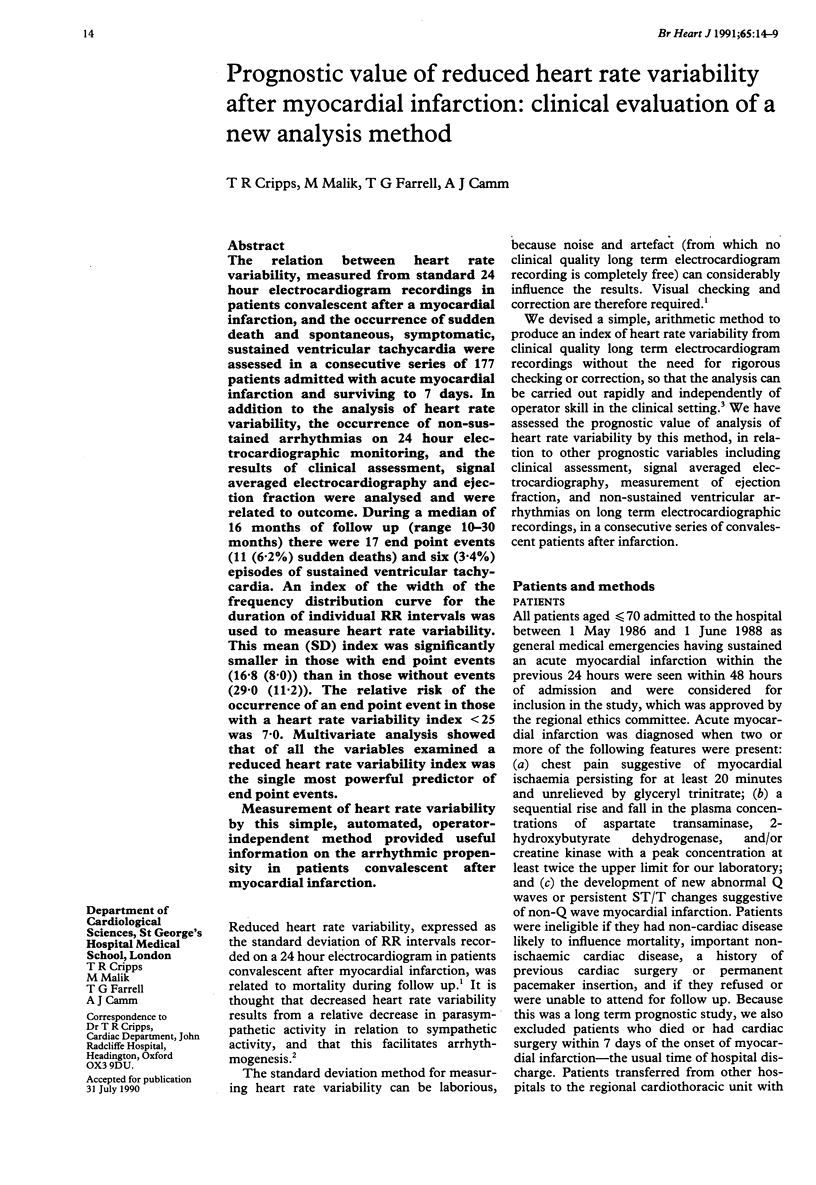
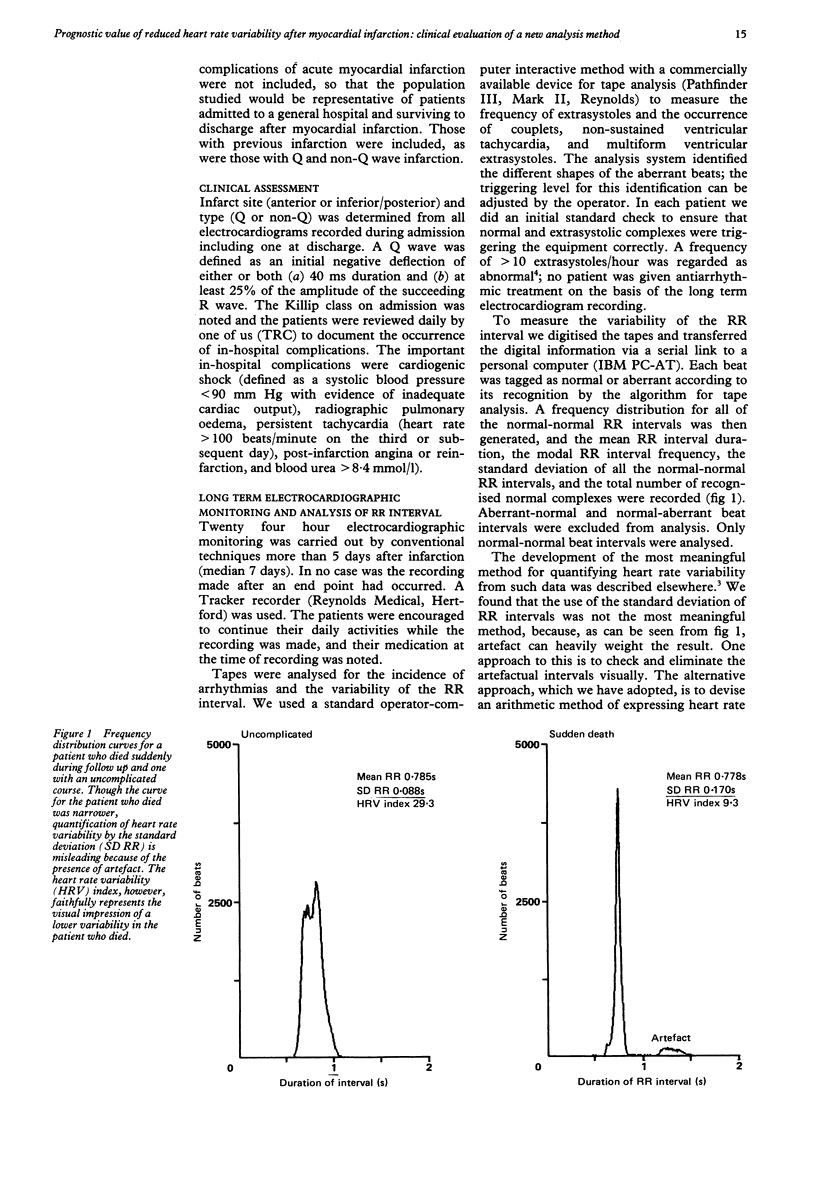
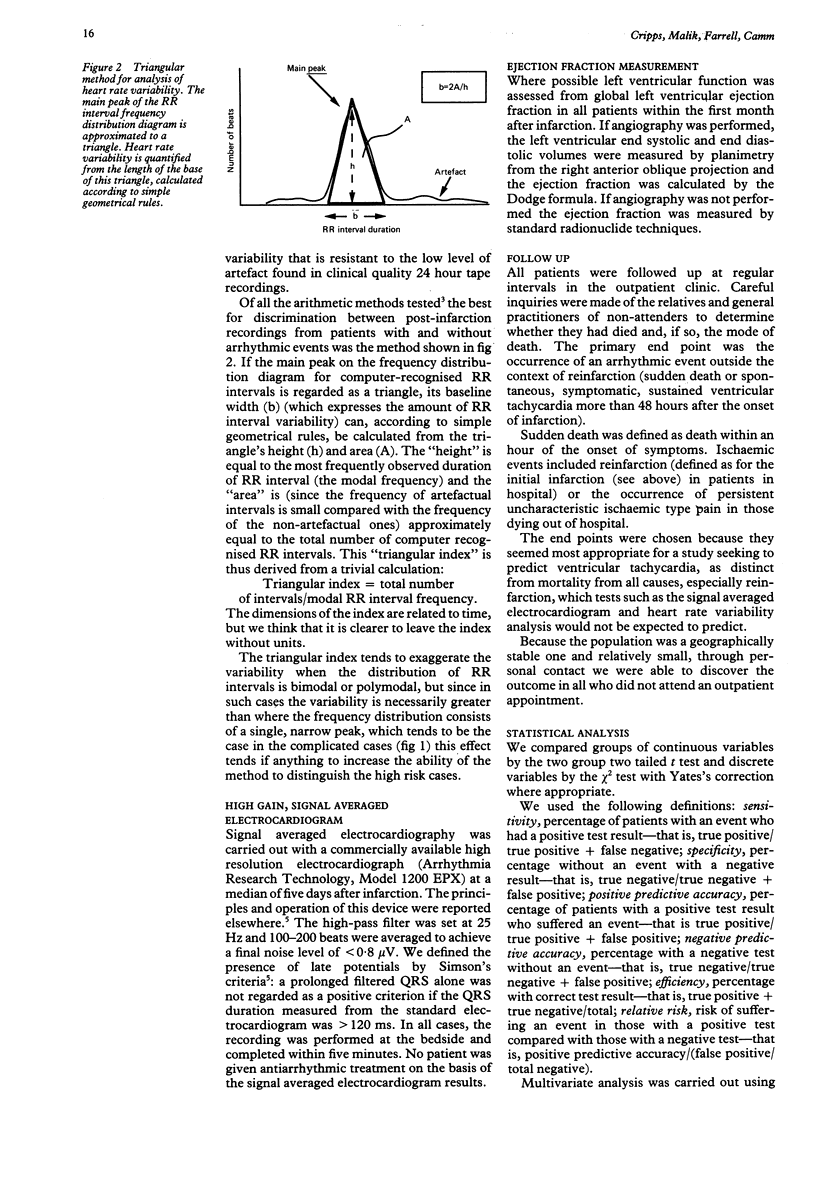
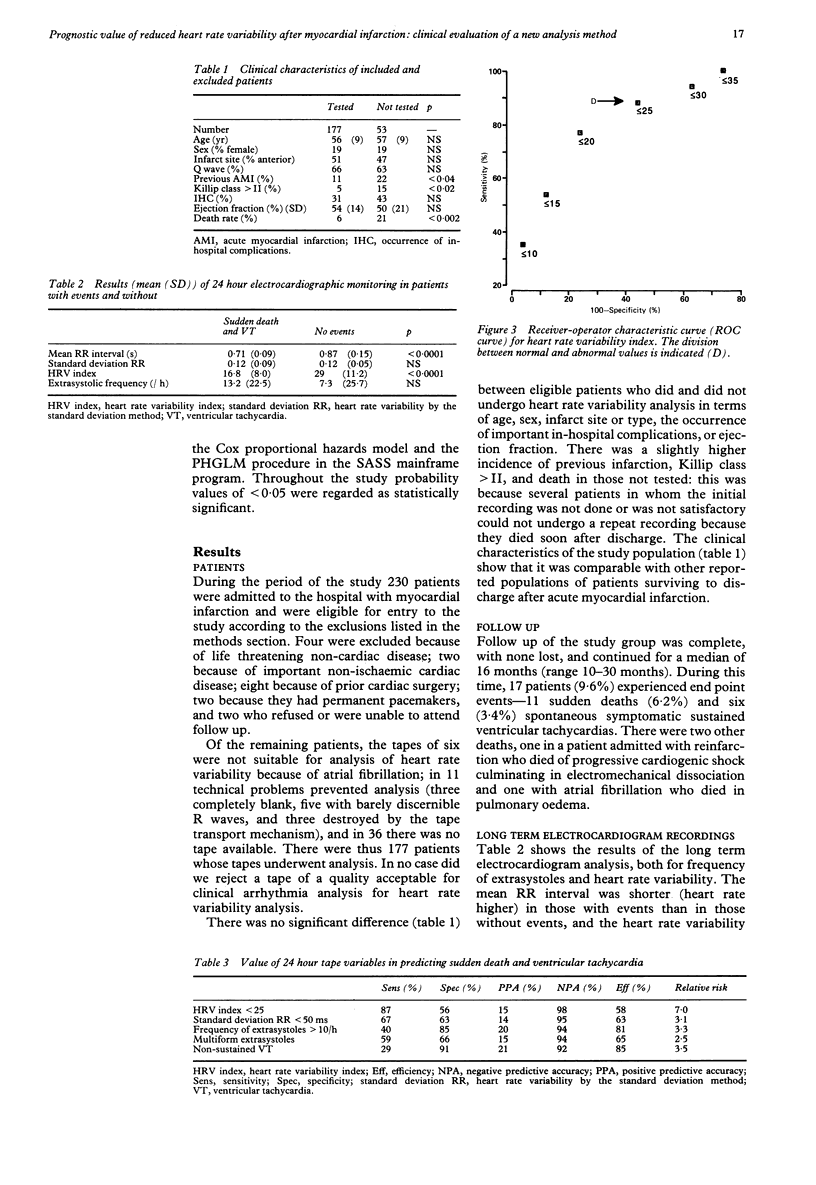
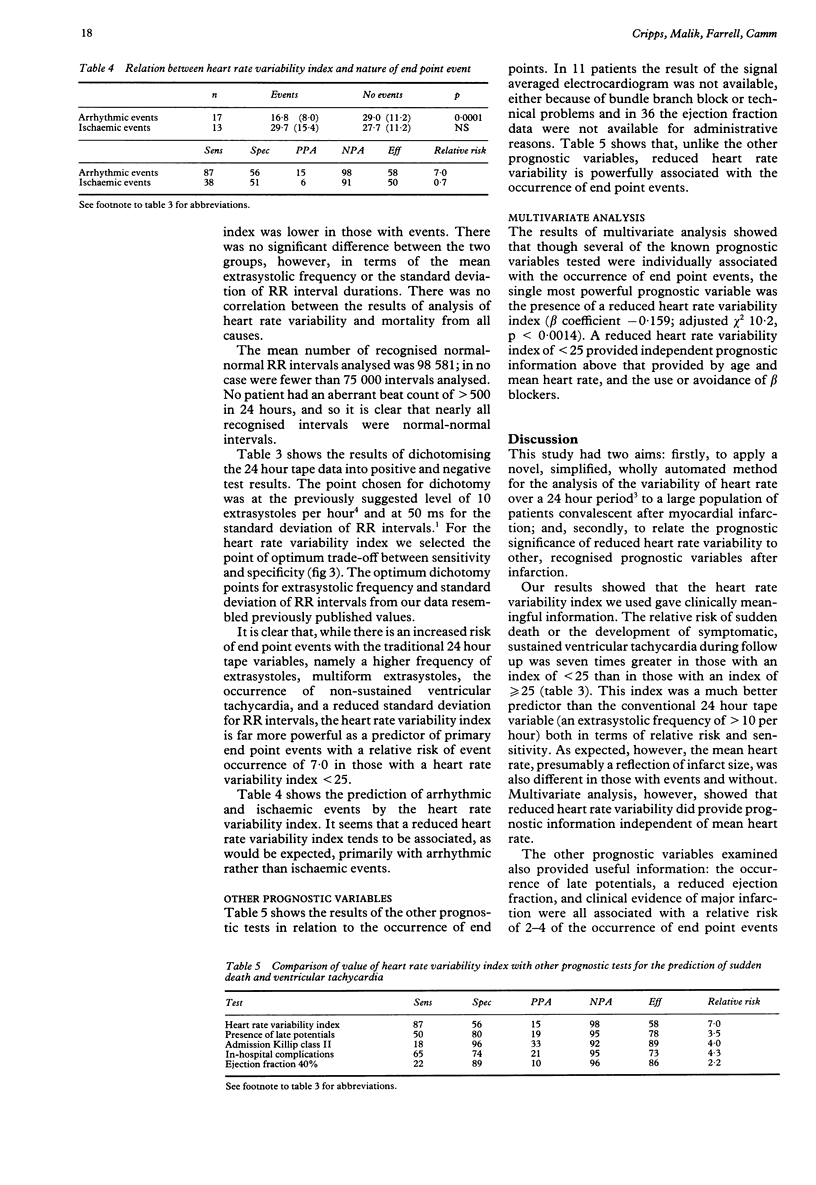
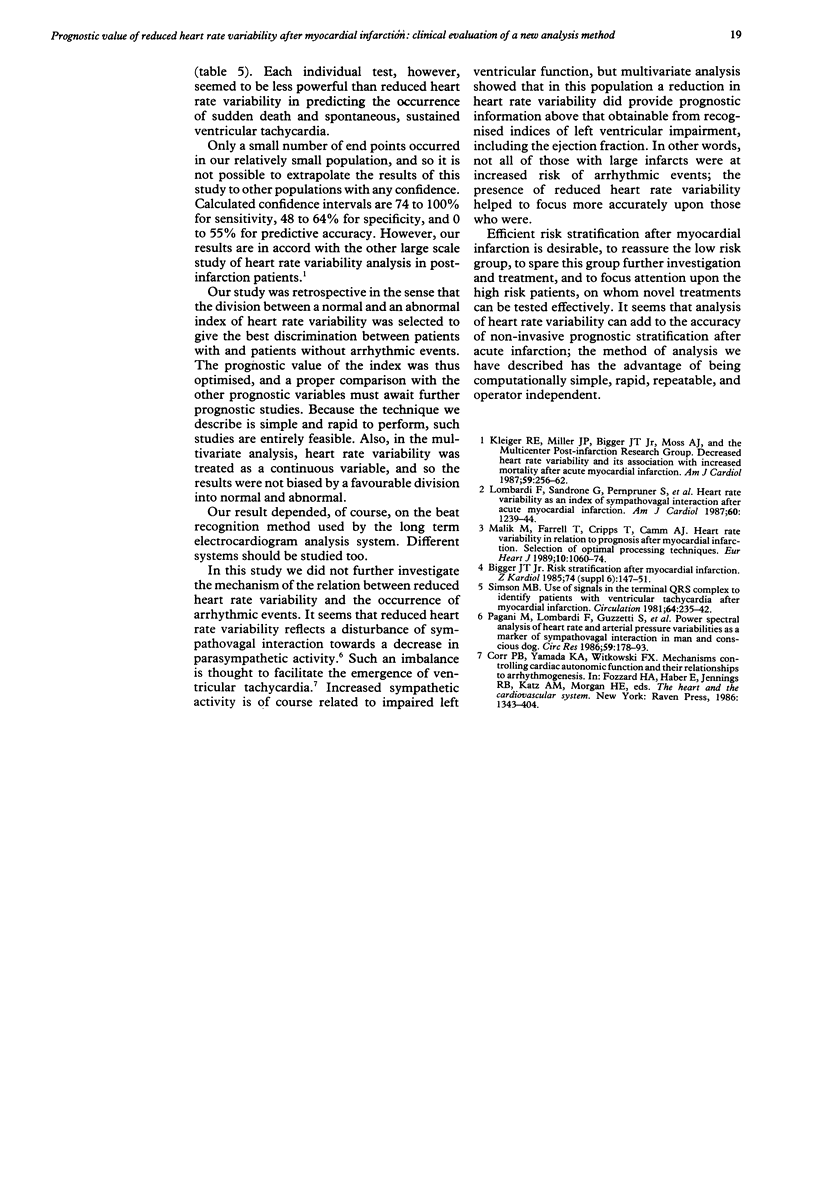
Selected References
These references are in PubMed. This may not be the complete list of references from this article.
- Bigger J. T., Jr Risk stratification after myocardial infarction. Z Kardiol. 1985;74 (Suppl 6):147–157. [PubMed] [Google Scholar]
- Kleiger R. E., Miller J. P., Bigger J. T., Jr, Moss A. J. Decreased heart rate variability and its association with increased mortality after acute myocardial infarction. Am J Cardiol. 1987 Feb 1;59(4):256–262. doi: 10.1016/0002-9149(87)90795-8. [DOI] [PubMed] [Google Scholar]
- Lombardi F., Sandrone G., Pernpruner S., Sala R., Garimoldi M., Cerutti S., Baselli G., Pagani M., Malliani A. Heart rate variability as an index of sympathovagal interaction after acute myocardial infarction. Am J Cardiol. 1987 Dec 1;60(16):1239–1245. doi: 10.1016/0002-9149(87)90601-1. [DOI] [PubMed] [Google Scholar]
- Malik M., Farrell T., Cripps T., Camm A. J. Heart rate variability in relation to prognosis after myocardial infarction: selection of optimal processing techniques. Eur Heart J. 1989 Dec;10(12):1060–1074. doi: 10.1093/oxfordjournals.eurheartj.a059428. [DOI] [PubMed] [Google Scholar]
- Pagani M., Lombardi F., Guzzetti S., Rimoldi O., Furlan R., Pizzinelli P., Sandrone G., Malfatto G., Dell'Orto S., Piccaluga E. Power spectral analysis of heart rate and arterial pressure variabilities as a marker of sympatho-vagal interaction in man and conscious dog. Circ Res. 1986 Aug;59(2):178–193. doi: 10.1161/01.res.59.2.178. [DOI] [PubMed] [Google Scholar]
- Simson M. B. Use of signals in the terminal QRS complex to identify patients with ventricular tachycardia after myocardial infarction. Circulation. 1981 Aug;64(2):235–242. doi: 10.1161/01.cir.64.2.235. [DOI] [PubMed] [Google Scholar]


